Wwise 2018.1 is out and available for you to download from the Wwise Launcher.
The new colourful UI option has been stealing all the thunder! So, while we were tempted to write a blog about how shiny and sleek it looks, out of fairness to the plenty of neat features and updates, here’s a summary of what’s new in 2018.1, colours and beyond.
User Interface Color Themes and Customization
In response to popular demand to augment legibility and contrast within the Wwise interface, Wwise 2018.1 presents a new Dark UI. This new skin allows text, colored curves and other graphics to stand out, and certainly makes the Wwise interface a lot more attractive! For old-timers preferring the original look, it’s still possible to keep the Classic theme. Users who would prefer something in between the Classic and Dark themes can also customize the UI using brightness, contrast, hue, and saturation controls.
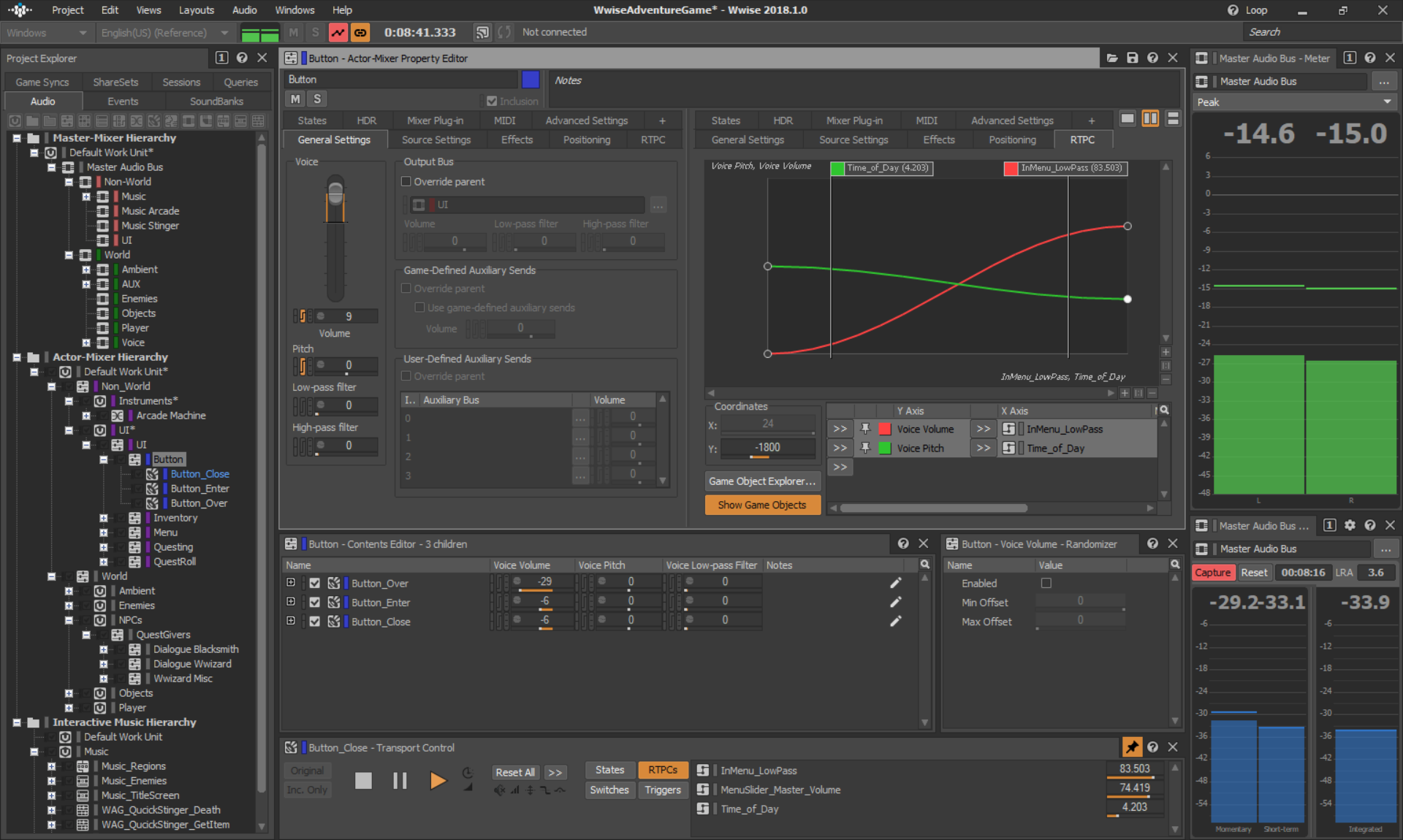
User Interface Affordance
Many little UI enhancements improve the use of available space, increase comprehensibility, and diminish user apprehension. Here’s a list of improvements you’ll quickly notice with Wwise 2018.1:
- The main menu has been moved to the application title bar.
- Some buttons with names, such as Start Capture and Follow Capture Time, have been replaced with icons, again, saving tons of space.
- Some icons, such as Save and Load Presets, Pin, View Settings, and more, have been redesigned towards clearer representations of their functions.
- To help color-blind users, multiple buttons and all sliders are now orange instead of blue, within the new Dark theme.
- The active Mute and Solo buttons changed colors! Mute is now blue, and Solo is now yellow.

Vertical and Horizontal Tab Splitter
Most of the views containing tabs can now be split vertically or horizontally, which allows users to see the content of any object, from two tabs simultaneously. Being able to see, for example, both the General Settings and the RTPC tabs at the same time is so valuable!
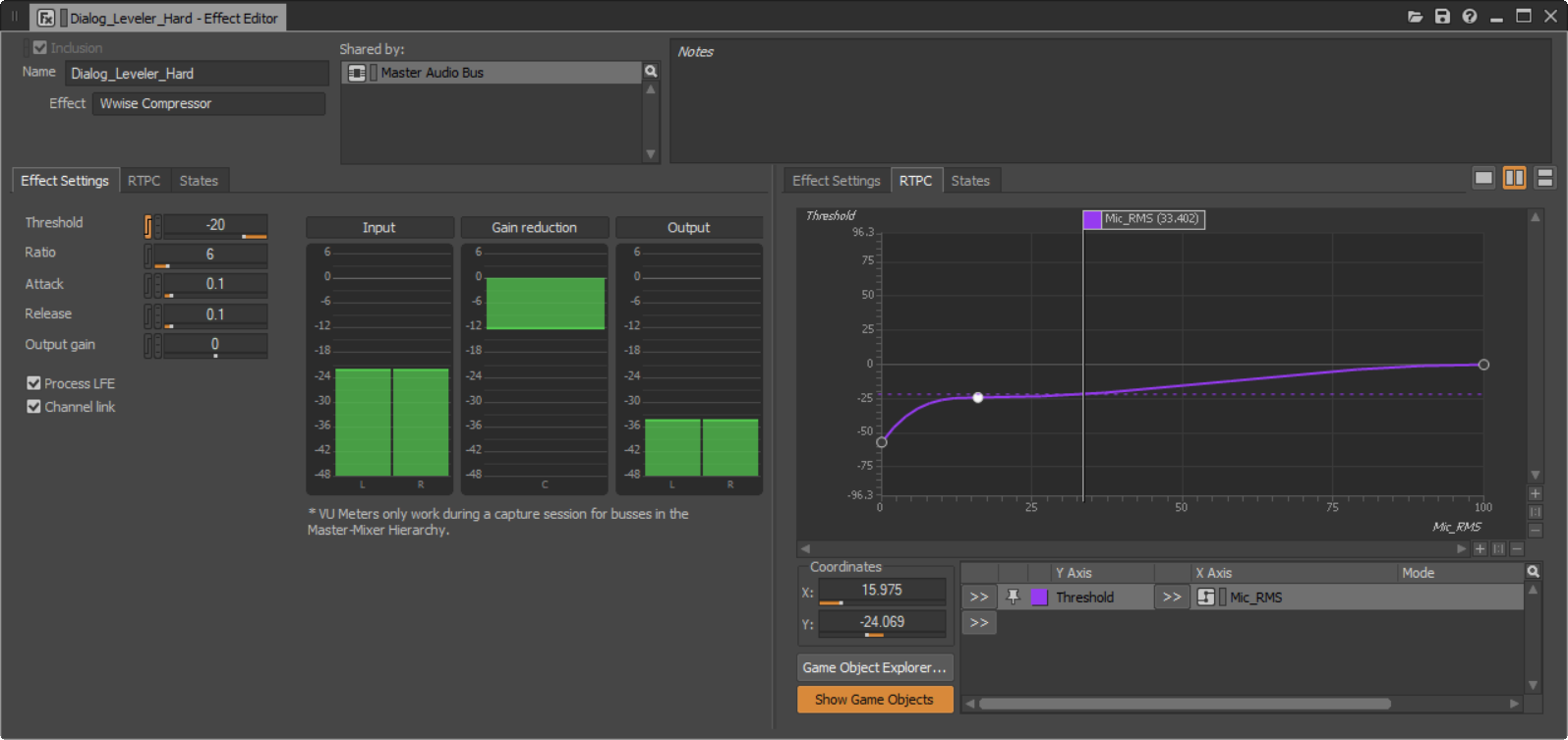
Object Colors
All objects in Wwise (literally any object you can select from the Project Explorer) can now be allocated a color tag. This helps users quickly identify specific objects based on status, ownership, or any other category-related contexts you desire. Additionally, within the Project Settings, you can set a Project color to have a project-specific Menu band. This helps users simultaneously working on different projects to quickly spot the right one.

Time Modulator
Time is a new modulator that is used alongside RTPC curves to create property automation over time. By attaching the Time modulator to any RTPC-able property, you can easily create complex volume envelopes, pitch ramps, filter modulations, or any other creative applications that may require variations over time.
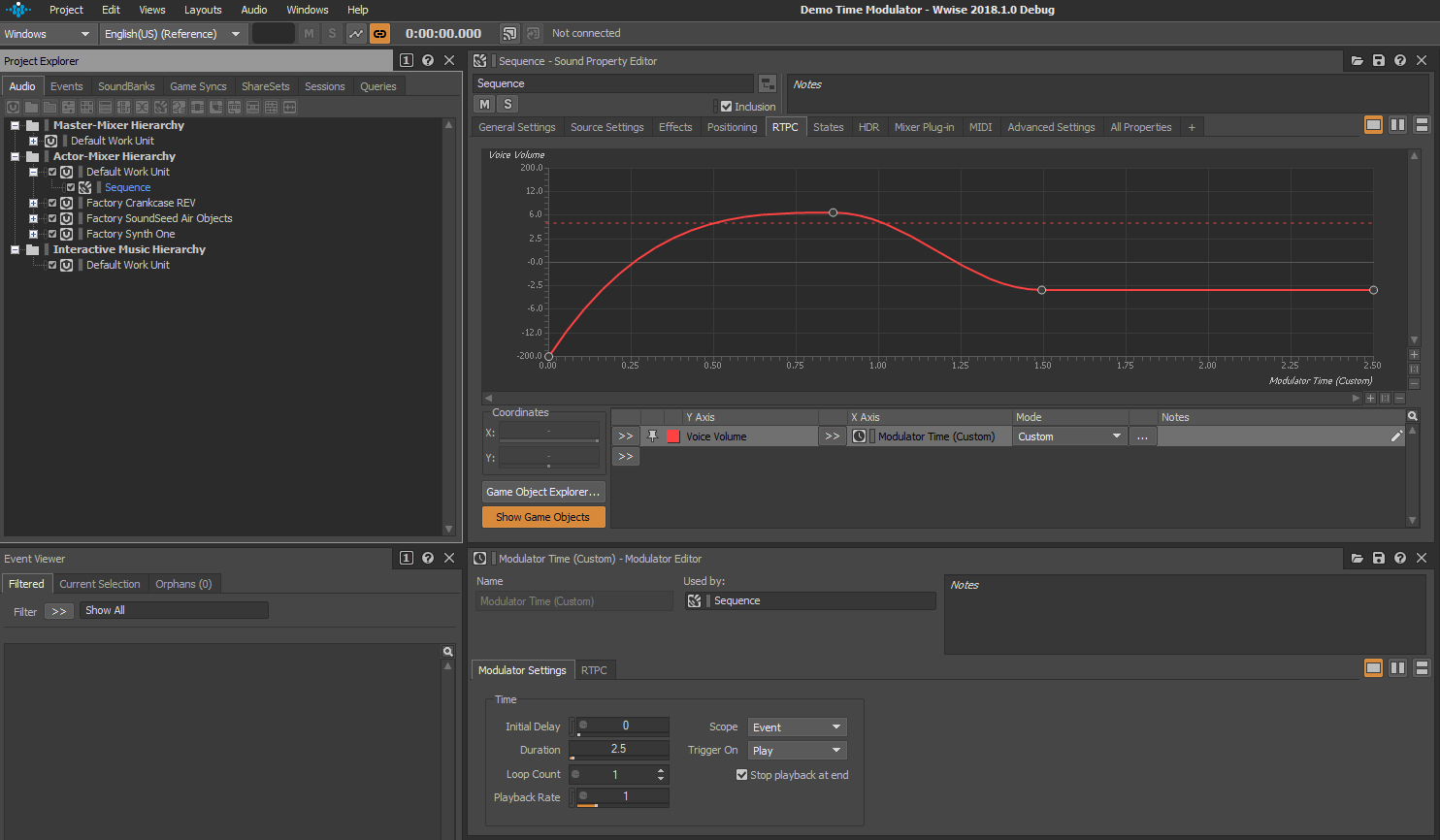
Configurable Columns in Contents Editor
The Contents Editor view has been updated to offer the same feature set as other list views. In particular, columns can be resized, property columns can be sorted, added or removed, Switches appear in alphabetic order in the Assigned Objects section, objects can be filtered, and more.
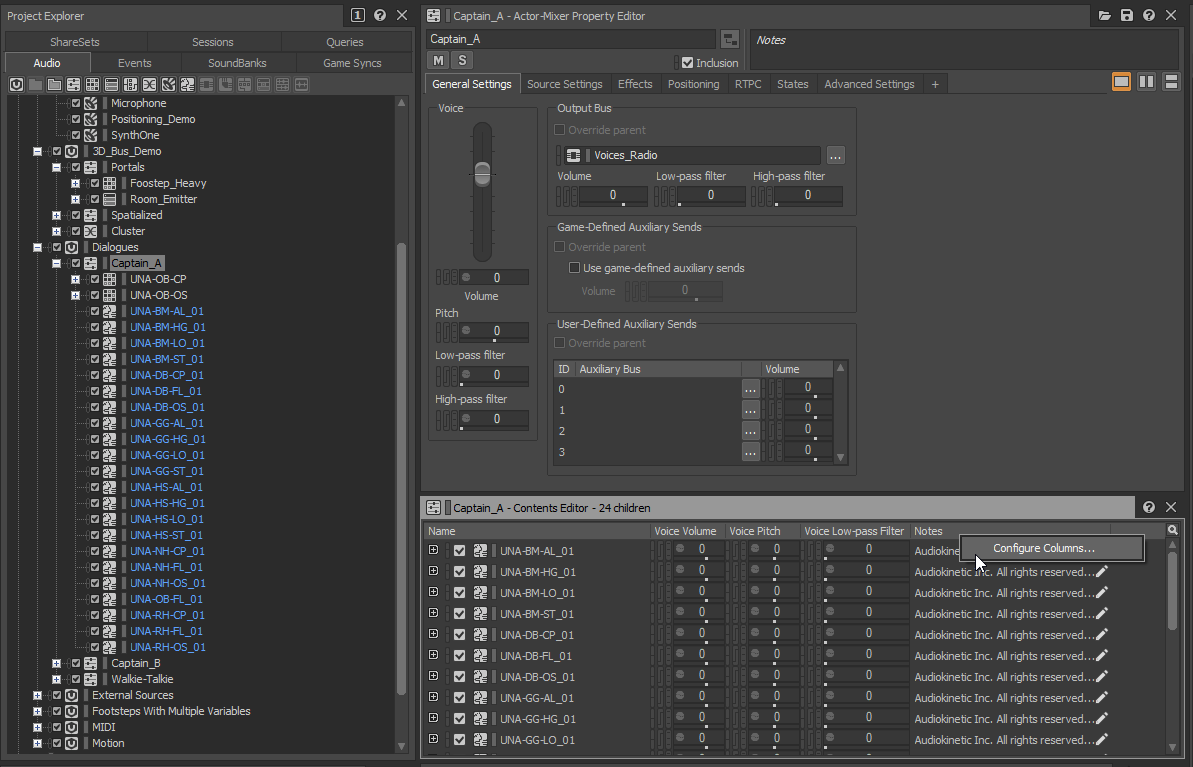
Contextual Help
The new Property Help view provides explanations specific to the selected property. This is very helpful for users wanting to quickly learn more about certain properties or to get a specific property's unit type and range, for example. The Property Help view should also be appreciated by our Chinese, Japanese, and Korean users as the information is displayed in their preferred language.
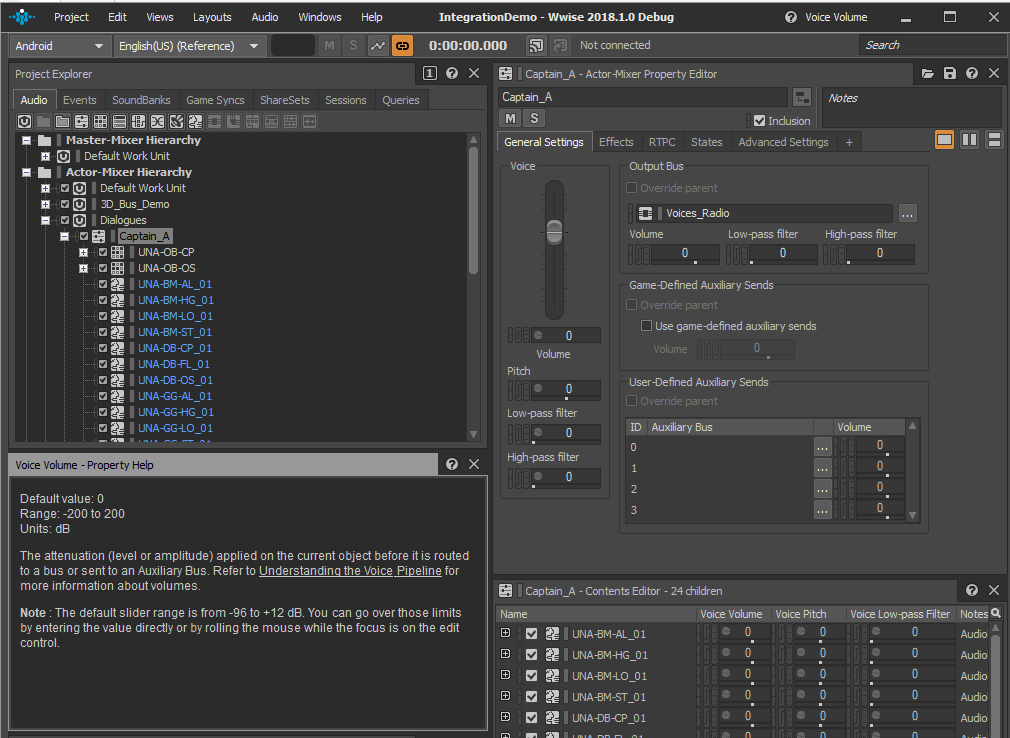
Capture Log Improvements
Some nice improvements have been made to the Capture Log view:
- When connecting the profiler to the game, the Capture Log now also lists errors that happened before the connection.
- The Capture Log view exposes the same features as any other list view in Wwise, allowing users to customize columns visibility as well as their order.
- The search functionality now searches all cells.
Other UI and Workflow Improvements
- Keyboard tab navigation available in multiple views.
- Busses can be copied/pasted in the Master Mixer Hierarchy. Bus Presets can also be saved and loaded.
- Effects can now be copied from one object to another.
- Users can now double-click on an Effect within the Advanced Profiler view's Voices Graph tab, to directly open the Effect Editor.
- The "New Child" contextual menu now exposes all source plug-ins which speeds up the creation of new hierarchies.
- Sound SFX can now be converted as Sound Voice (and vice versa) after they've been created.
- More splitters have been added to various views to help organize the content.
- The Event Editor presentation workflow has been optimized, and fade icons have been added.
- The user's expand/collapse selections, for each State Group in the States tab, are now retained.
- Auto-scroll during drag is now supported in the Project Explorer, and expand/collapse options and commands have been updated.
- The results displayed in the project search view now remain displayed while navigating them.
3D Meter
The 3D Meter provides a spherical visual representation of the soundfield distribution. The listening point is located at the center of the sphere, but you can also see the distributed sonic energy from outside the sphere, with standard viewpoints such as Front, Back, Top and Perspective.
The 3D Meter provides invaluable help during development to assess how audio sources are distributed around the listener and how loud they are. Similar to peak meters, the 3D Meter uses color gradations, with configurable volume thresholds, indicating how audible the signal is all around the listener.
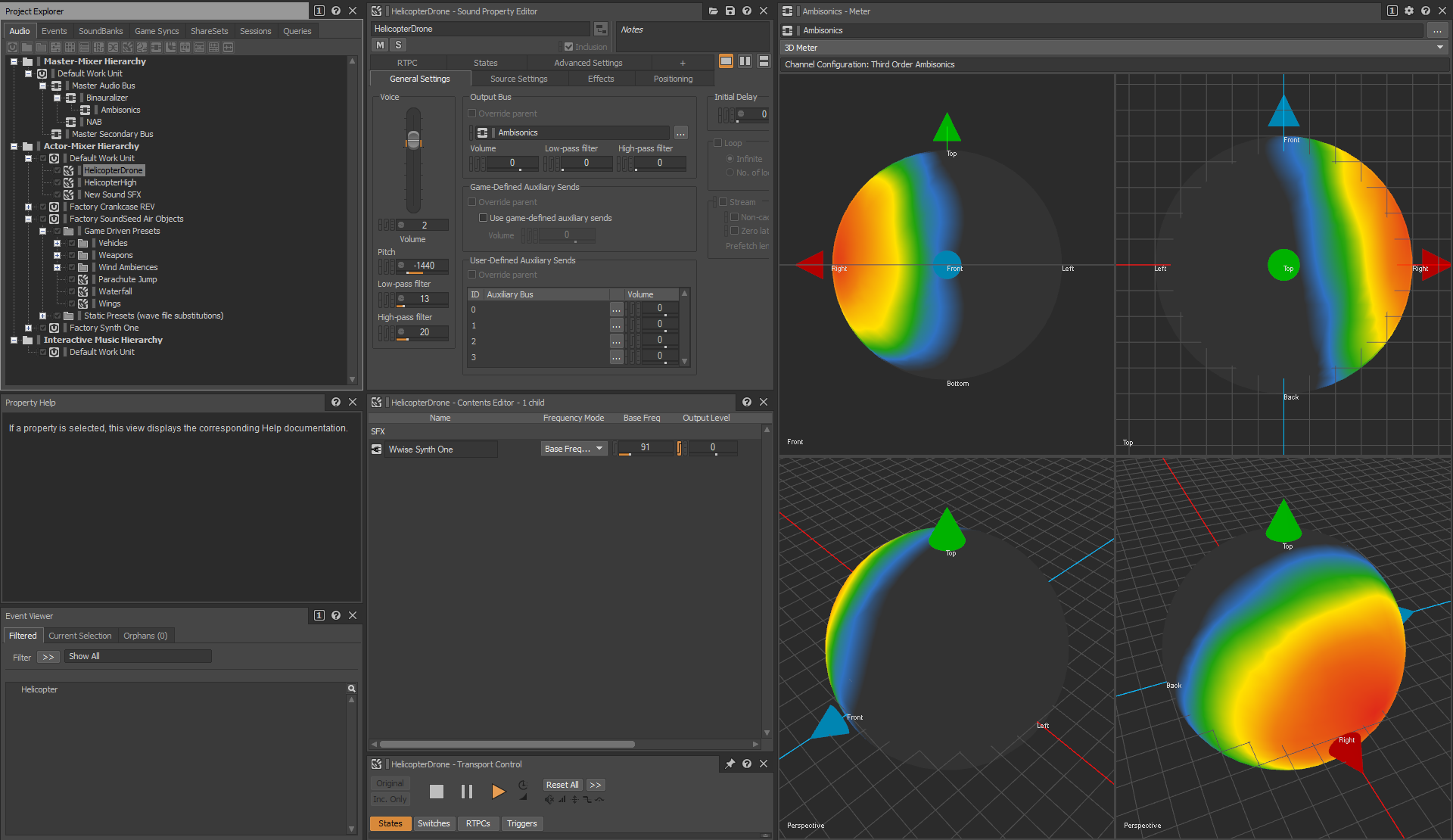
Wwise Motion
A new special source plug-in, Wwise Motion Source, enhances Motion functionality by offering:
- More precise actuator effects;
- A platform agnostic workflow; and
- More flexibility, with the Time Modulator curves replacing the old ADSR, Period, and Period Multiplier settings.
Additionally, a series of "Factory Presets" have been created showcasing various haptic feedback events and how they've been adapted on different platforms. To get the Presets, select Import Factory Assets from the Project menu and check for Wwise Motion.
Note: The old Wwise Motion Generator plug-in is still available but is now deprecated.

OPUS Codec
The OPUS codec is now supported on all platforms. Opus is a great alternative to Wwise Vorbis when file size has to be particularly compact because, with some extra CPU, it can compress more at comparable quality to Wwise Vorbis. In tandem, these codecs complement each other well to meet the competing demands of file size and CPU.
A note on looping and seeking with Opus
Opus does not require a seek table for seeking or looping, but this comes at the cost of a higher CPU usage and more disk accesses (if streaming). With this in mind, usage of Opus should be limited to sounds that require little or no seeking or looping. Note that seeking or looping at the beginning of the file is trivial and does not come with that extra cost.
Resource usage - Comparing Opus to Vorbis
Looking at the listening test results from listening-test.coresv.net [http://listening-test.coresv.net/results.htm], the Opus codec scores a bit higher than Vorbis with regards to perceived quality at similar bitrate. Better quality for similar file size does sound advantageous at first, but this slight bump in quality comes at the cost of Opus being 4 to 5 times more expensive in regards to CPU than the Wwise Vorbis codec. Nevertheless, it is a great choice for compressing thousands of dialog lines, long SFX, or single stream music pieces (non-looping).
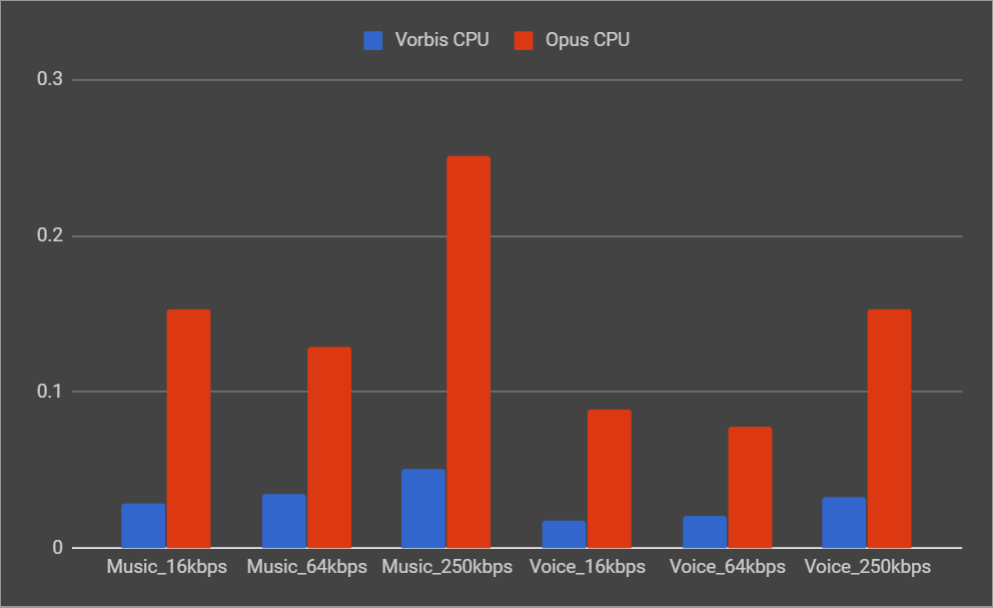
Comparing Vorbis and Opus CPU usage
For more information about how Opus compares to other codecs for audio quality, see [https://opus-codec.org/comparison/]
Wwise Recorder Plug-in Improvements
The Recorder Plug-in can now record in AmbiX format, which enhances support of the Ambisonics file format in Wwise.
WAAPI - New SoundBank Functions and Topics
New commands, available through ak.wwise.ui.commands.execute and keyboard shortcuts, allows SoundBank generation and automatic closing of the SoundBank generation dialog once the task is completed.
Other new commands:
- ak_wwise_core_log_get.
- ak_wwise_core_log_itemadded.
- ak_wwise_core_soundbank_generated.
Experimental Features
Early adopters will be glad to see some experimental features exposed. Experimental features are ones still in their development phase and will continue evolving over the next releases of Wwise. Their feature set might be incomplete, and their performance could still need improvement, but are made available to expose what's coming next to developers who may be interested.
Parallel Execution of Audio Rendering
- The sound engine can now issue individual Voice and Bus processing tasks to the game engine's job scheduler, allowing tasks to be executed in parallel across CPU cores and improving overall system efficiency by better utilizing available CPU resources.
Geometric Diffraction
The spatial audio geometry API
- Calculates paths around world geometry and determines how much a sound from an emitter must diffract to reach the listener.
- Is rendered in the same manner as the Rooms and Portals API - either by using obstruction (Volume, LPF, and HPF processing per sound path) or by bounding it to an RTPC.
- Can be used in conjunction with Rooms and Portals. The geometric API models diffraction with greater detail that would be possible using Portals alone, whereas Rooms and Portals offer broad strokes with lower CPU utilization.
- Client-side visibility ray-testing is no longer necessary to determine obstruction values when using geometric diffraction on a spatial audio emitter.
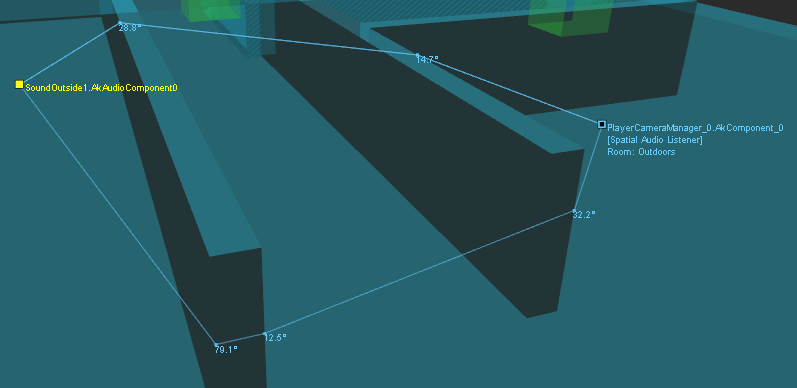
Wwise Reflect - Diffracted Reflections
- Diffraction of reflection paths are modeled in two ways to solve common issues with the feature set since its introduction in Wwise 2017.1, notably that image sources could suddenly become visible or invisible, causing an instantaneous change in audibility.
- Non-specular reflections are modeled at the edge of surfaces, providing a smooth fade into the secular region.
- Reflections that are obstructed by another surface can be diffracted in a manner similar to the direct path, providing a smooth fade into the visible region.
An emitter and listener between two reflective walls:
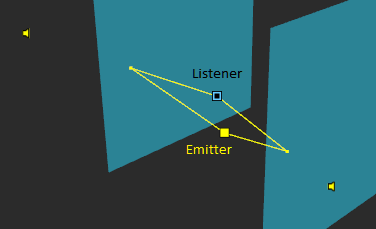
First with two specular reflections
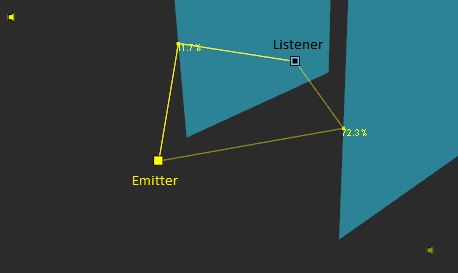
And second with two non-specular reflections
Positioning Tab Enhancements
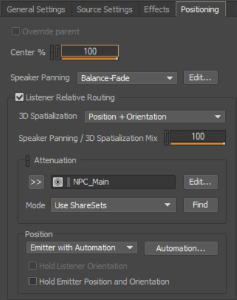
Multiple properties from the Positioning tab have been slightly moved and/or renamed with the goal of simplifying their usage. A few new options have also been introduced. Here’s a summary of the main changes:
R.I.P. 2D/3D
The concept of 2D/3D has been around in game audio since the 90s. However, as the field of spatial audio becomes more complex, these terms are becoming limiting at best if not misleading sometimes. For the sake of clarity and future development, they’ve been renamed as such:
- “2D” is now referred to as “Speaker Panning”, which currently offers two options:
-
Balance-Fade (that’s the old “2D Panner”) or
-
Direct Assignment
- “3D” is now defined as “3D Spatialization”
A really cool feature is that you can now set both Speaker Panning and 3D Spatialization settings and interpolate between them at runtime using the mix value. This Speaker Panning / 3D Spatialization Mix property can be attached to a RTPC for smooth transitions between one mode to the other for example.
The 3D User-defined feature that allowed the creation of positioning paths around the listener has also been renamed. “Automation” clarifies its function. Another cool feature is that complements automations around the listener, is that you can now create automation paths around an emitter.
Finally, two check boxes have been renamed for clarity while keeping the same behavior:
- ‘Follow Listener Orientation’ has been renamed ‘Hold Listener Orientation’.
- ‘Update at each frame’ has been renamed ‘Hold Emitter Position and Orientation’.
Improvements to Wwise Reflect
- Colors assigned to Acoustic Textures are used by the Game Object 3D Viewer when profiling, which certainly helps identifying where and which Acoustic Textures are used by the 3D application.
- Advanced control over delay lines provide ways to reduce or embrace Doppler effect on reflections.
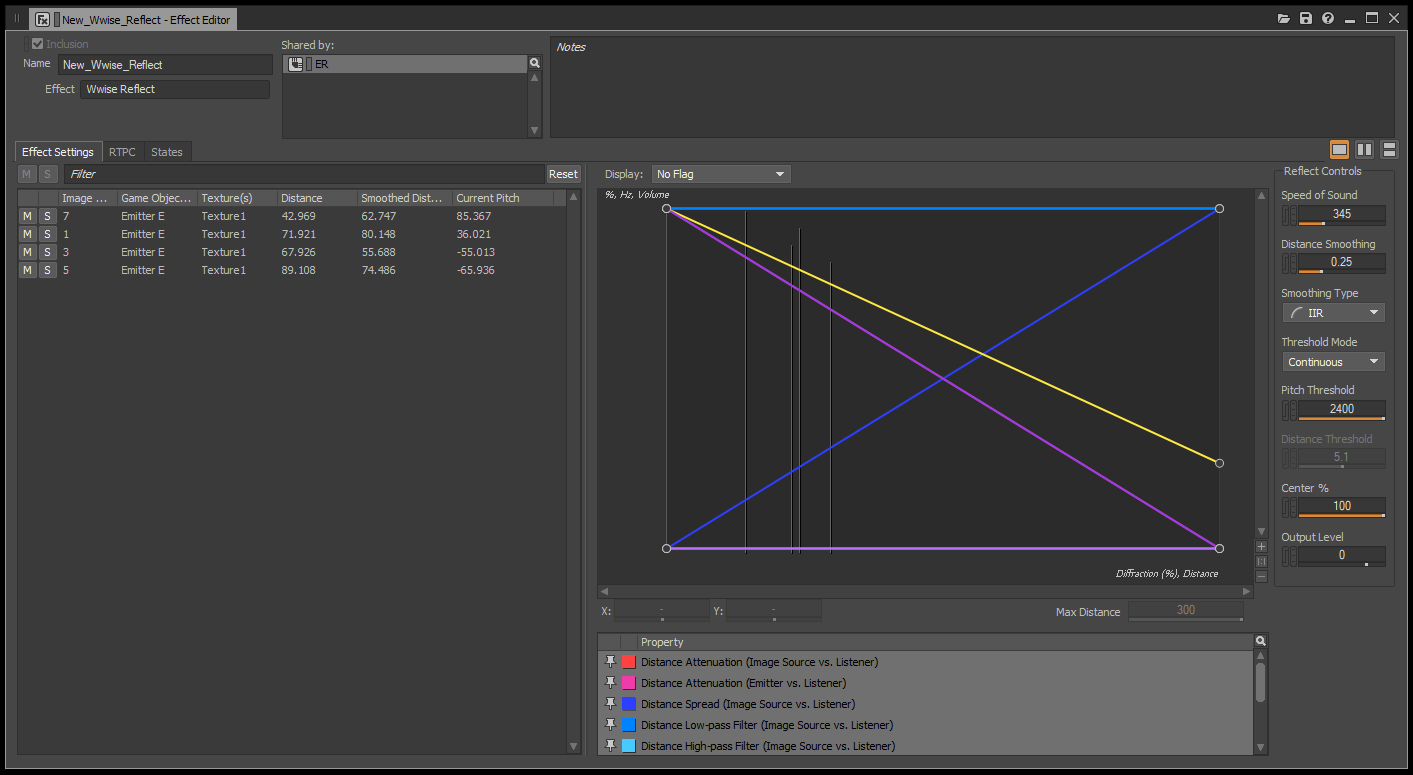
Unity Integration Improvements
- The communication settings used by the profiler are now exposed to Unity Editor.
- The APU heap size can now be set from Unity Integration.
- Users can now write their own scripts communicating with the Wwise Authoring tool via WAAPI because of a newly added C# WAAPI Client class.
- Wwise initialization settings, where various memory pool sizes are defined, can now be defined from Unity Editor for each platform.
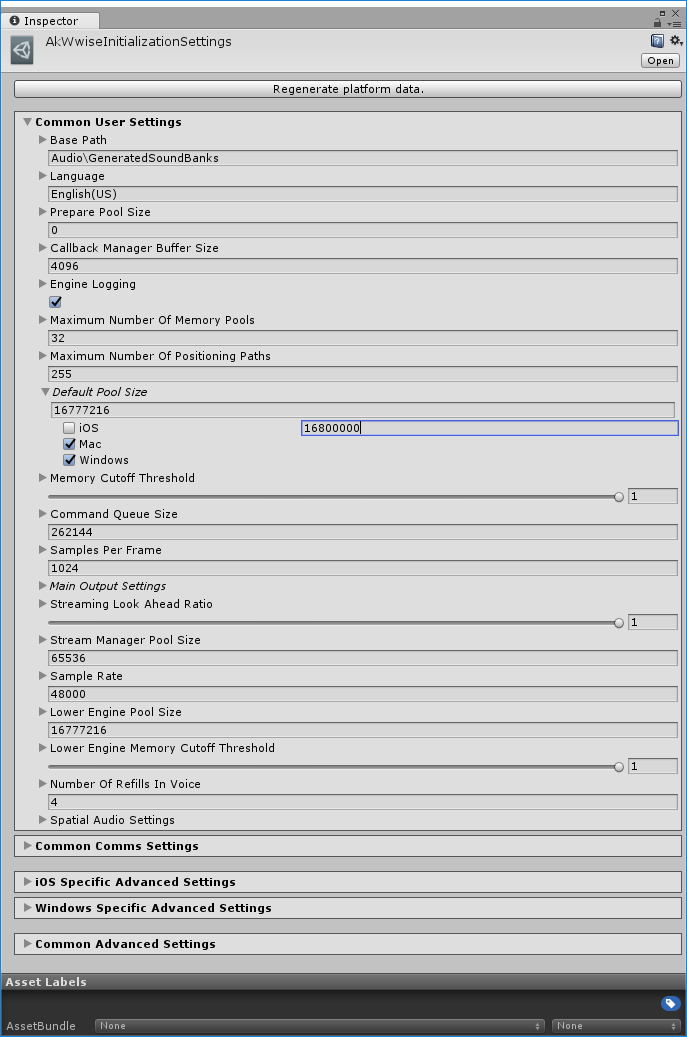
UE4 Integration Improvements
- The Wwise Integration now exposes support for audio input. This feature can be extended to provide routing for voice chat.
- Event and SoundBank callbacks are now exposed to Blueprint.

.
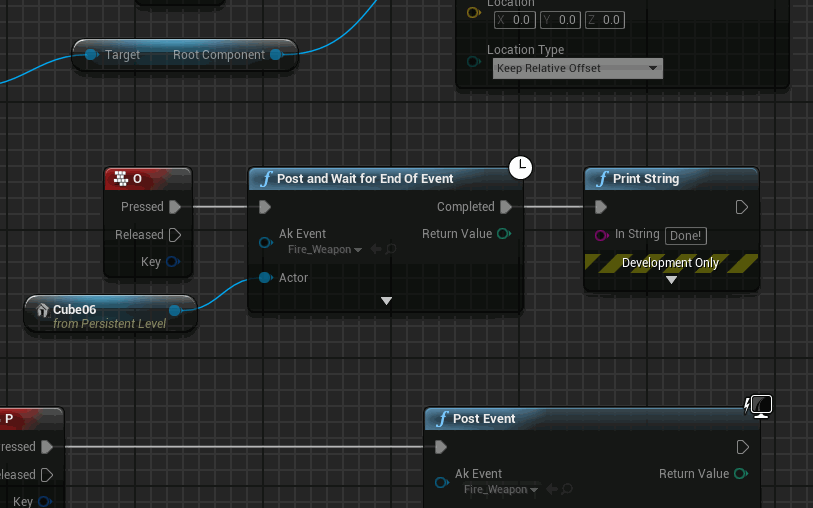


Comments
Marcus Constein
September 03, 2018 at 11:12 pm
Greetings! Hi I'm new here and new to Wwise. I have tons of experience with audio and music production however. So I am totally loving this software and program. I'm learning a lot and having lots of fun with the Online 101 Course you guys have been so awesome and kind to deliver. I probably just got here in time for a shift and a update. I notice the new 3D and Positioning workflow has been updated now in this latest version. However the screenshots and instructions for Lesson 4 in the course is referencing the old version. Now i'm just a bit confused as i'm still learning. I guess i could launch the old version and do the lesson in that but this 3d stuff really really fascinates me and I'd rather 'get it' working with the new version stuff. but I'm still to much of a newbie to be sure i'm doing it right. Care to shed some light on this ? :) With kind regards and lots of love. I'm gonna learn this awesome software and start working with this, thanks for the great software! It is really superfun for a game and audio geek like me!